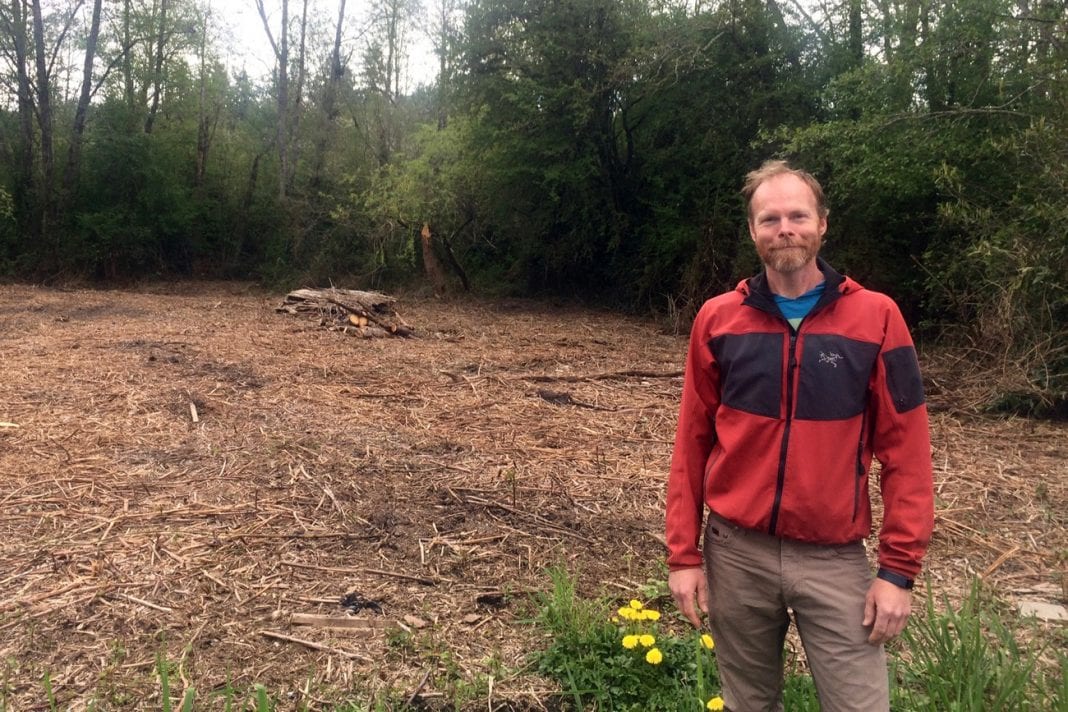Standing at the side of an alleyway in Fairhaven, Ted Clifton gestures across a field of decapitated blackberry bushes. The dead plants are blocked off by a row of trees to their west, a row of still-standing blackberries to their east, and Padden Creek to their south.
In the middle, Clifton is plotting his latest innovation: a small community of homes that produce at least enough energy to power themselves, and maybe enough to return some power to the energy grid.
Clifton is the owner of TC Legend Homes, a local construction company that builds net-zero and net-positive houses. If all goes according to plan, this site in Fairhaven could eventually house eight small dwellings, each only 900 to 1000 square feet, in a co-housing system with an eye toward energy efficiency.
Clifton imagines the dwellings arranged in a kind of arc around the property, so their front porches could look out on one another.
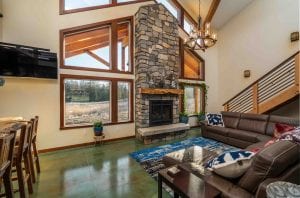
Almost half of the property is on the other side of Padden Creek, and due to city codes requiring a stream buffer, he can’t build more homes on that side. Instead, he envisions a large community garden space.
The goal of this project addresses two problems Clifton perceives in current housing construction: they’re often built cheaply, without considering their social or environmental impact. Socially, our homes have trended toward privacy and moved away from front or back porches that encourage community building. Environmentally, cheap materials are often poor insulators, which ends up requiring lots of energy to heat and cool the house.
Clifton has been building net-zero homes for almost a decade. Net-zero means the house produces as much energy as it uses, so its total or net energy use is zero. By installing solar panels, even houses in the Pacific Northwest can produce enough energy to power themselves.
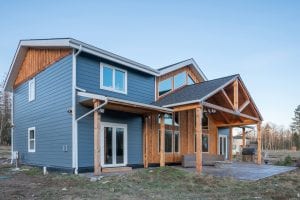
Lately, Clifton has taken this method one step further to build net-positive homes. In this case, the house actually produces more energy than it needs, leaving leftover power to charge an electric car or cars and return power to the energy grid. In this case, homeowners are not only freed from paying utility bills each month, they actually receive a check from the utility company for the energy they’ve contributed.
To a lot of people, owning a home that also powers their electric car sounds futuristic and out of reach, Clifton says. When he first heard about net-zero homes, he too thought they wouldn’t be feasible for decades.
“I thought net-zero housing was something maybe our kids would figure out how to do,” Clifton says. “I didn’t think it was something I would do in my lifetime.”
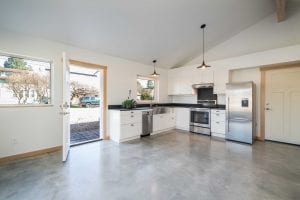
Today, Clifton’s house powers itself and his electric car, and he receives a check from the utility company each month.
In much the same way the cost of solar panels and electric cars have dropped dramatically in the last decade, the cost and feasibility of building a net-zero home has come into reach.
“We find that for a lot of people, building net-zero homes is more cost effective than building anything else,” Clifton says.
It requires shifting your priorities, he says. Building a net-zero home means trimming down a lot of the elements that would normally go in to building a new house, things like granite counter tops, in favor of putting that money toward triple-pane windows and solar panels.
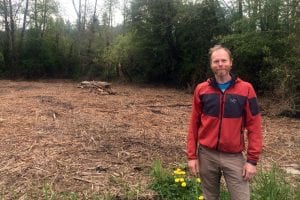
The more expensive upgrades, like solar panels, are paid off over several years along with the mortgage. However, their payback time is less than that of the average 30-year mortgage. The money normally spent on utility bills goes toward the panels, and eventually into your wallet.
For someone so tied in to the energy world and the related threats from climate change, Clifton says he is entirely optimistic about the future of net-zero homes.
“It’s not common knowledge today that net-zero is cheaper,” he says. “In 20 or 30 years, everybody will know that.”
“We’re developing products fast enough that in 30 years it would be really silly [not to build a net-zero home],” Clifton says. “It would be like the one guy with the horse and buggy after the automobile was invented.”
Not only will technology continue progressing to support more net-zero homes, our energy future depends on it, Clifton says.
“My goal in my personal life is to repay all the carbon that I’ve put into the atmosphere for the first 40 years of my life by generating more power than I use,” he says. “I have to be enough net-positive so that in the next 40 years I can pay it all back.”
As he looks to the future, Clifton hopes to leave his kids with the same healthy planet he was able to enjoy. Energy efficiency innovation is his way of trying to ensure that happens.
“My personal motivation for wanting to build net-zero houses is just the basic rule that you have to clean up after yourself,” Clifton says.
The co-housing project in Fairhaven is still a long ways out, and it might not even come together as Clifton currently imagines it. But even if that winds up being the case, it’s clear he’ll continue pushing the envelope on energy efficiency for decades to come.




























